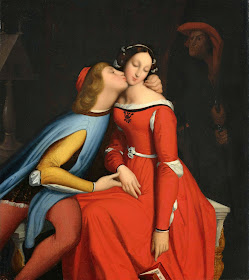Jean-Léon Gérôme: Rachel Felix Personifying Tragedy
Rachel Felix was a celebrated actress. One of her champions was the critic Jules Janin, who wrote
Whatever the merit or the talent of tragic actresses before Rachel, the actor was the absolute master of tragedy, and as far as we were concerned, an actress always took second place. Then suddenly, we were both astonished and charmed by a young woman who represented all by herself the whole of Shakespeare.
"She set a pattern for professional endeavour that actresses all around the world were to inherit. The temptation to attribute the scale of her financial success primarily to her fondness for tough negotiation or, for that matter, to her apparently scandalous private life with its series of influential lovers and mentors, should be resisted. Whatever her strengths as an independent woman, her acting style alone was felt as the expression of large-scale struggles. She lived in an age of revolution, and the fact that her own political allegiances sometimes seemed to have been guided largely by opportunism does not affect the rebellious significance of her art. The idea that creativity could be autonomous, self-generating, was itself historically based and, although in France it could be linked to conservative tendencies on individualistic grounds, faith in the power of pure inspiration always enlivened the present. Rachel drew much of her potency from the complex intellectual climate in which she worked, and she gave back energy in return.
"In Gérôme's academic painting Rachel is surrounded, correctly, by the attributes of Melpomene: pillar, dagger and mask, and she leans against a plinth upon which are listed the roles with which she was most famously associated: Phedre, Hermione, Camille, Roxane, Pauline. On a sarcophagus to one side the names of the great tragic playwrights, Aeschylus, Sophocles, Euripides, Corneille, Racine are all listed." [
Three Tragic Actresses: Siddons, Rachel, Ristori, by Michael R. Booth, John Stokes, and
Susan Bassnett. Cambridge University Prss, 1996, pp. 70, 73]






































%2B1859.jpg)